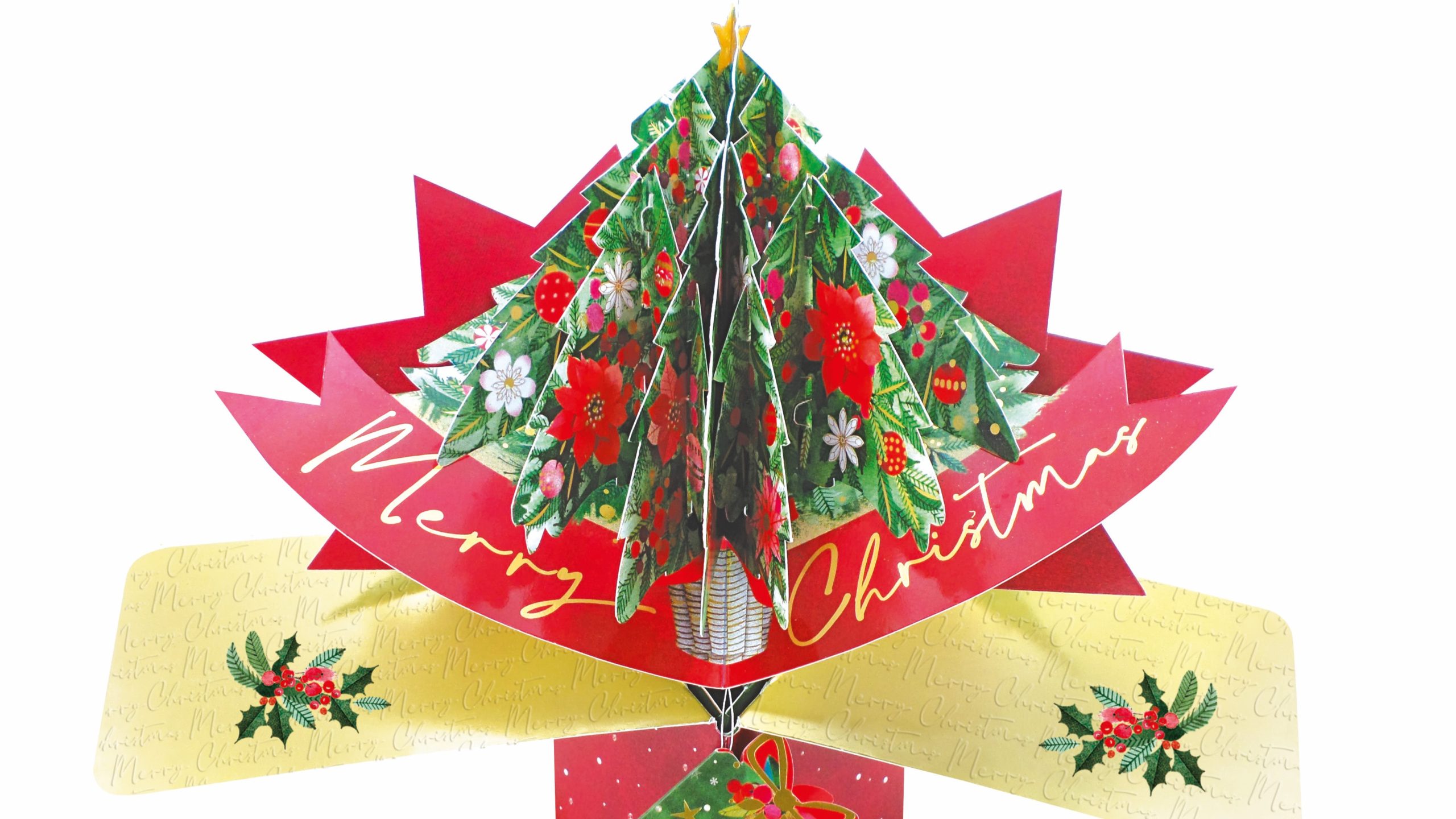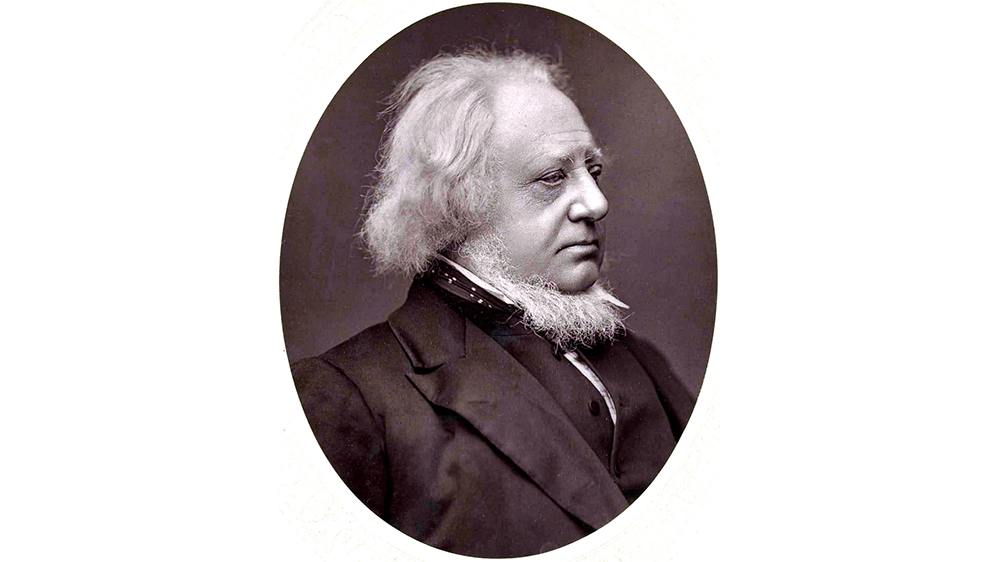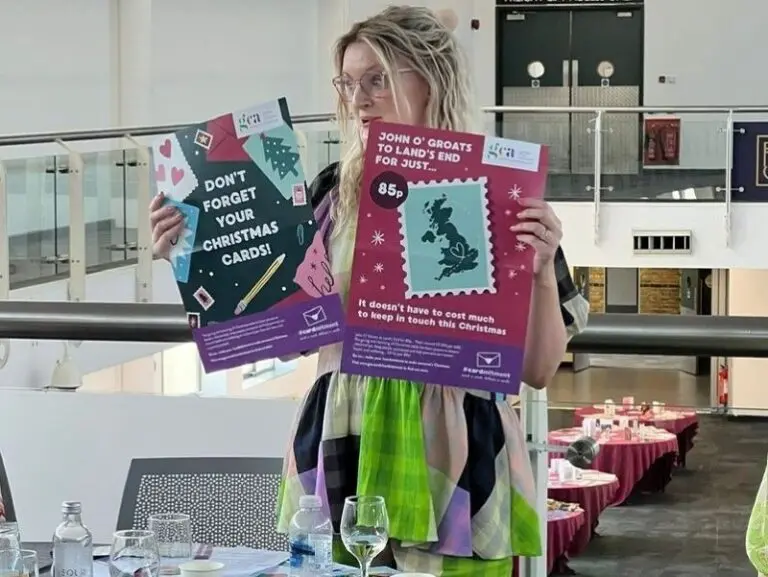
In 1843, civil servant and entrepreneur, Sir Henry Cole, finding he was too busy to send his customary Christmas letters to all his friends and acquaintances, commissioned his friend, the artist John Callcott Horsley, to design a card for him to send instead.
The First Christmas Card
The card design, in true Victorian style, depicted the two sides of Christmas. A central image which portrayed Henry’s family happiness with a plenitude of food and drink was flanked by two scenes showing the less fortunate poor and needy being helped with gifts of food and clothing. The card was of a similar size to a post card and carried the message A Merry Christmas and a Happy New Year to You.
Sir Henry had a thousand cards engraved and hand coloured, sending half of these to his friends and selling the remainder for a shilling of time at the shop in London’s Old Bond Street. They became all the rage – but also caused controversy – as the Temperance Movement vociferously objected to the fact that it depicted his family drinking a Christmas toast, with a child taking a sip!
There are few remaining examples of that first Christmas card, one recently sold at auction for £25,000. The Dicken’s Museum in London has also acquired one.
The card was designed for Cole by artist John Calcott Horsley. The BBC visited the South Devon, the home of Calcott Horsley, and interviewed GCA member Laura Stoddart about that first Christmas card and the continuing popularity of Christmas cards in 2020.
Sir Henry Cole
In 1838 working with Rowland Hill, Henry Cole pioneered the introduction of a cheap prepaid letter post – the penny post. Taking on the responsibility for the postage cover design brought Henry Cole into contact with artist John Calcott Horsley whose talents he drew upon in 1843 when he personally commissioned the design, which was to become the first commercial Christmas card.

While the Penny Post and the Christmas card represent Henry Coles most direct connections with the greeting card industry of today, to stop there would be to ignore the massive impact he made in supporting creatively driven industries as well as general appreciation of aesthetics. He worked with talented designers to develop a range of decorative giftware which were marketed under the brand of Felix Summerly’s Art-Manufacturers.
In 1850 Henry Cole became chairman of the Society for the Encouragement of Arts Manufacturers and Commerce which made him well placed to push for improvements in areas such as patents and the extension of postal reform to include overseas and parcel post.
Yet his most impressive project in this role has to be the organisation of the Great Exhibition of 1851. Essentially the UK’s first international trade exhibition, this brought together no less than 14,000 exhibitors under the enormous glass roof of the Crystal Palace, providing a showcase for the best of British industry. It was the Great Exhibition which was the foundation of what went on to become the Victoria and Albert Museum, which Henry saw as one of his greatest achievements, often referring to it as his ‘child’. Founded in 1852 as a Museum of Manufacturers and renamed in 1899 in honour of the widowed Queen Victoria and her much mourned consort, the museum fulfilled Cole’s mission to educate British designers and manufacturers. As the largest and most influential museums of decorative arts in the world, the V&A remains true to its principles “to increase the understanding and enjoyment of art, craft and design through its collections available to the widest possible audience.”
The V&A museum continues it’s links with greeting cards, and holds a collection of around 30,000 cards. These range from 18th-century Valentines to present day cards for all kinds of occasions. Acquisition records from as early as the 1850s show that contemporary cards were purchased for the Museum from stationers – an activity that continues today.
Sir Henry Cole’s name lives on in the greeting card industry through The Henries, the annual UK greeting card awards.
The Penny Post
Postal services in Britain had developed at pace from the mid 1700’s as roads were build and regular Stagecoach routes connected the country, however the charging scales of post was based on distance, and paid by the recipient; so mail was the preserve of the rich. The introduction of the Penny Post in 1840, with those famous Penny Black stamps, changed this.
Post Office Reform was being considered in 1837, and as part of this Sir Rowland Hill proposed a uniform rate of postage, regardless of distance, with prepayment possible by purchasing and affixing an adhesive stamp to the letter. The stamp could be purchased at the post office. His proposals rapidly gained strong support, with popular support for the “penny post” overcoming initial political disinterest, and the uniform rate and a system of prepayment by stamps were introduced in 1840.
The introduction of the Penny Post was the catalyst to a massive growth in the sending of cards, for a period cards could even be sent for 1/2 penny, as long as they weren’t in a sealed envelope.
By the turn of the century, the Post Office and its postmen (whose uniforms had been ‘as red as Robins’) were handling an extra 11.5 million deliveries during the Christmas week. Now our most popular Christian festival generates lorry-loads of cards worldwide, well over 1 billion in the UK alone.
Christmas card sending in the 21st century
Card sending in the UK increased dramatically in the early 20th century, with cards playing a particularly important role in communication during the two world wars.
The British send more cards per capita than any other nation. Generally the growth in Christmas card sales in the early 21st century has been in individually sold ‘single’ Christmas cards as people put in more effort to chose the right card for a special friend or family members. And of course once opened Christmas cards become part of the seasonal decorations!
The greeting card industry post their cards on Festive Friday every year, to start the annual wave of Christmas card sending. This year we are encouraging consumers to join in too!

Popular greeting card designs
While religious themes dominated many Christmas cards in the 20th century, secular images have been popular since that first card. Snow continues to be a popular Christmas card image today, this first appeared in 1860, after the coldest winter on record, in a famous image of a Stagecoach battling through blizzards and snowdrops.
During the 19th century, Holly and Ivy, robins and piglets, which were particularly popular with the Victorians, dominated the front of cards. Father Christmas grew in popularity as even Queen Victoria opted for a secular illustration on the thousands of cards she sent every year to staff, friends and tenants, both at Windsor and at Osborne House. Her favourite affected children dancing around a Christmas tree.
One of the most popular Christmas cards during the First World War included a picture of soldiers huddled round a brazier, toasting absent friends.
However, the Christian message still features on many cards; the infant in the manger whose birthday is being celebrated is always popular, and in the 21st century there is a trend for more stylised and often more whimsical nativities, which perhaps reflects the much more culturally-diverse nature of British Christianity in the 21st century. Short quotes from traditional carols are popular, as are the themes of light and peace such as candles and doves.
Fascinating Facts
- We spent over £1.5 billion on single greeting cards in 2023, according to the Greeting Card Association’s annual report*. [NB: This figure excludes packs and boxes of cards]
- In 2023 we sent 91.5 million individual ‘single’ Christmas cards, specially chosen for friends and family* [NB: This figure excludes packs and boxes of Christmas cards]
- We spent £178m on these individual special Christmas cards in 2023, an increase on the £167m spent in 2022*.
- The average price of these individual Christmas cards in 2023 was £1.94*.
- It is estimated that UK consumers send 1 billion Christmas cards each year in total, including the large number of Christmas packs and boxes for which there are no definitive figures due to the disparate nature of these sales.
- In 2021 79% of consumers planned to send the same or more Christmas cards in the future according to the GCA’s Consumer Survey**
- 16% of 18-24 year olds & 19% of 25-34 year olds surveyed in 2021 planned to send more Christmas cards than previous year**
- Greeting cards is a world-leading British Creative industry; we lead the world in innovative design and export our cards all over the world.
- Cards are a good tangible way of keeping in touch, and mean more than a social media message which are sent all the time.
- 18-34 year olds are sending more cards than a generation ago. This trend is being seen in US too – Millennial’s were responsible for the 44m more cards sent in 2018 according to the United States Postal Service.
- There is an increase in ‘all occasion’ cards, sending cards to people just to say hello, share a joke, image provoking a memory, express how you feel, thinking of you.
- For more information on Christmas traditions see our Victorian Cards, Crackers and Christmas Themes blog
*Source: The Greeting Card Association 2024 Annual Market Report which covers UK greeting card sales for single greeting cards in 2022 compared to 2021.
** Source: Greeting Card Association Consumer Survey Report conducted in summer 2021. This includes information on changes in purchasing during and after the COVID-19 pandemic.













